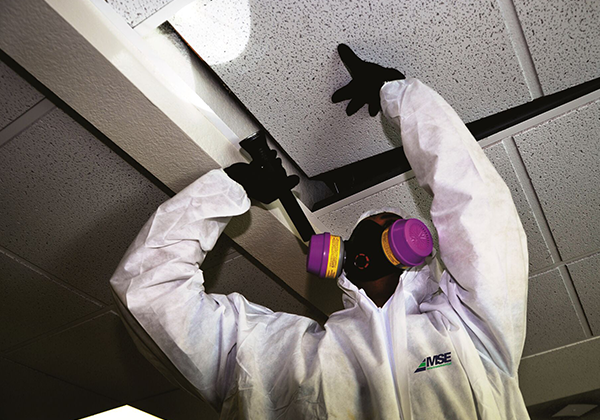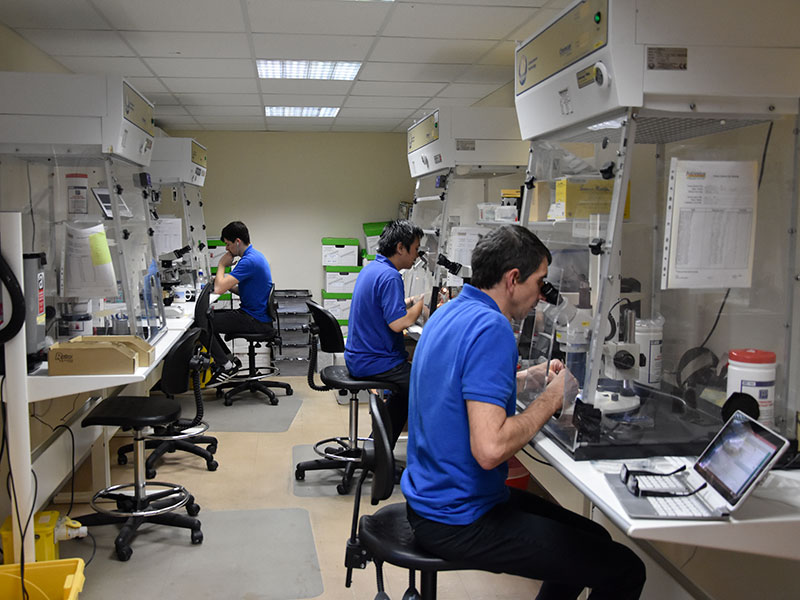Asbestos Testing: Important Steps for a Safe Living Environment
Asbestos Testing: Important Steps for a Safe Living Environment
Blog Article
The Complete Process of Accredited Asbestos Examining to Ensure Residential Property Conformity
In the world of residential property administration and compliance, the process of accredited asbestos testing stands as a crucial component to make certain the safety and security and health of passengers. From the preliminary assessment to the final analysis of outcomes, each stage plays an important role in determining the visibility of asbestos within a building.
Accredited Asbestos Screening: Preliminary Assessment
In conducting the first evaluation for certified asbestos testing, a thorough assessment of the home's materials is essential to properly determine potential asbestos-containing products. This important step includes visually examining all areas of the home, including ceilings, walls, floor covering, insulation, and other structure materials that might nurture asbestos. Special focus is provided to products that are susceptible to harm or disturbance, as these scenarios can release harmful asbestos fibers right into the air. Additionally, tasting of thought products may be needed to confirm the visibility of asbestos through research laboratory analysis.
Recognized asbestos assessors adhere to strict procedures established by regulatory bodies to make sure the precision and reliability of the screening process. By diligently documenting findings and making use of sophisticated screening techniques, assessors can give homeowner with a comprehensive report outlining the existence of asbestos, if any kind of, and the advised steps for mitigation or elimination. This initial evaluation establishes the foundation for succeeding activities to address asbestos concerns and guarantee the security and conformity of the building.
Example Collection Procedures for Asbestos Checking
Reliable example collection procedures are vital in making sure precise asbestos testing results and conformity with governing criteria. When accumulating examples for asbestos testing, it is essential to follow strict methods to decrease the threat of contamination and guarantee the dependability of the results.
Firstly, it is necessary to determine the thought asbestos-containing products (ACMs) and focus on tasting locations based on factors such as the product's condition, ease of access, and potential for disruption. Asbestos Testing. Samples should be accumulated from different places within the residential or commercial property to provide a thorough analysis of asbestos visibility
Throughout sample collection, certified professionals should put on suitable individual protective equipment (PPE) to secure against asbestos direct exposure. They need to use tidy devices, such as disposable gloves and plastic bed linen, to stop cross-contamination between examples. Samples need to be thoroughly accumulated utilizing a defined strategy, such as damp cleaning or coring, and safely secured in closed containers to maintain their integrity throughout transportation to the research laboratory for analysis.
Research Laboratory Analysis Refine for Asbestos Examples
Upon completion of the example collection process, the asbestos samples are diligently carried to accredited official website labs for thorough analysis. At the lab, educated specialists take care of the samples with extreme treatment to prevent any type of cross-contamination or example degradation. The initial step busy analysis process is example prep work, where the collected samples are very carefully refined to extract the asbestos fibers. Asbestos Testing. This step is vital to ensure precise lead to the succeeding evaluation.

As soon as the evaluation is complete, a comprehensive report is produced, detailing the searchings for and validating whether asbestos is existing, the sort of asbestos fibers identified, and the concentration levels. This information is essential for residential property proprietors to take the essential actions to make certain conformity with asbestos laws and guard the wellness of owners.

Reporting and Interpretation of Asbestos Test Results
Certified asbestos testing labs supply thorough records that supply crucial insights right into the presence, kind, and focus degrees of asbestos fibers located in examples accumulated sites from properties. These records are crucial for property owners and supervisors to recognize the threat postured by asbestos and make educated choices concerning its administration or removal. The records commonly consist of details on the techniques utilized for testing, the locations from which examples were taken, the kind of asbestos recognized (such as chrysotile, amosite, or crocidolite), and the focus degrees of asbestos fibers found.
Translating these results requires proficiency important link to assess the possible health and wellness dangers associated with asbestos direct exposure, establish the proper strategy, and make sure regulative compliance (Asbestos Testing). Relying on the findings, recommendations might vary from continued monitoring and upkeep to encapsulation or complete asbestos reduction. Building proprietors ought to meticulously examine these reports and talk to asbestos professionals to create a detailed plan for resolving any type of asbestos concerns determined
Ensuring Building Compliance With Asbestos Rules
To maintain adherence with asbestos policies, residential property proprietors must vigilantly execute procedures to make certain conformity with applicable laws and guidelines. When asbestos is determined, residential property proprietors have to follow asbestos management plans that overview appropriate containment, removal, or encapsulation procedures to avoid exposure and spread of asbestos fibers.
Homeowner must supply asbestos recognition training to staff members and passengers to lessen the danger of asbestos direct exposure and make sure appropriate handling of materials that may include asbestos. Additionally, it is essential to stay informed concerning any kind of updates or adjustments in asbestos laws to readjust administration methods accordingly. By proactively addressing asbestos conformity needs, homeowner can produce a safe environment for owners and alleviate prospective legal and health threats connected with asbestos exposure.
Conclusion
In verdict, accredited asbestos screening is an important process for making certain residential property conformity with regulations. The first evaluation, example collection procedures, laboratory evaluation, and interpretation of outcomes are all essential actions in this procedure. By following these treatments, homeowner can determine and address any kind of asbestos risks existing, securing the health and security of occupants and keeping compliance with governing requirements.
Report this page